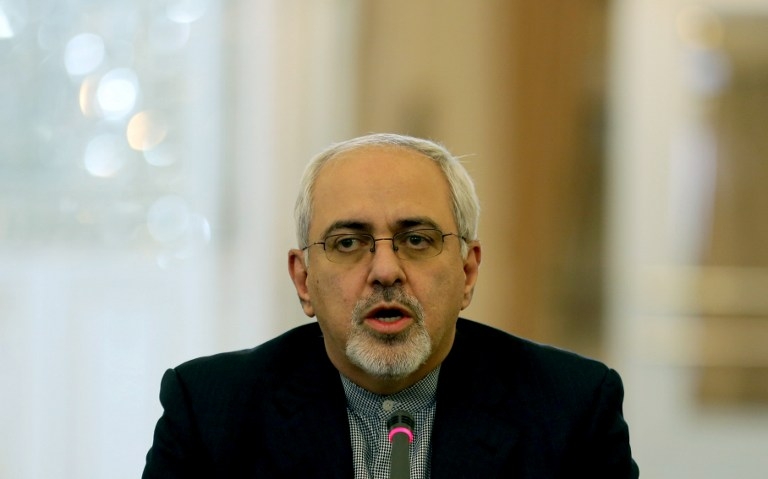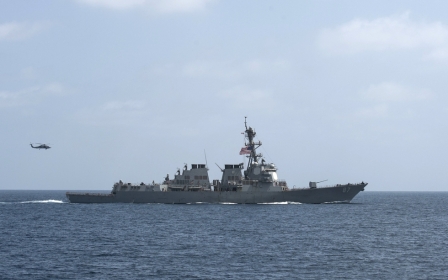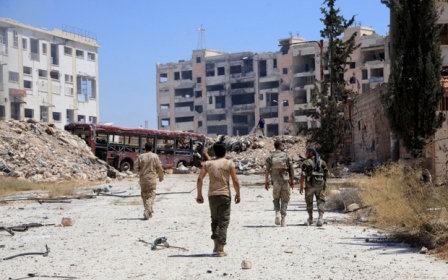Why Iran wants to avoid conflict with Saudi Arabia

In spite of escalating public and diplomatic tension between Iran and Saudi Arabia - and most recently a rise in military tension with Iranian naval forces warning against Saudi Arabia’s military exercises in the Strait of Hormuz, Iran still wants to avoid conflict with Saudi Arabia.
Iran sees the problem as much wider and going beyond bilateral ties between Iran and Saudi Arabia. It is concerned by the possibility of a US return to the region.
The roots of conflict between Iran and Saudi Arabia are often assigned to ideological Shia-Sunni rivalry or geopolitical competition over each country’s role in the region. These were escalated by the Hajj incident last year in which hundreds of Iranian pilgrims died.
But one should not ignore another significant factor in the equation: the two states’ conflicting views on the presence of the US in the region and the security challenges which flow from it.
The Saudis have traditionally perceived the US presence in the region as supporting their interests and for regional security. From their perspective, such presence is essential for containing Iran’s growing regional role. They complain that, by overthrowing the Taliban and Saddam Hussein, the US changed the regional balance of power in favour of Iran. They fear that Barak Obama’s engagement policy in light of the nuclear deal means that Washington has embarked on the the path of accepting Iran’s dominant role in the region.
To counter this, the Saudis have adopted a two-pronged policy. First, they have embarked on an independent and offensive policy in the region, known as the Salman Doctrine, which is aimed primarily at containing Iran everywhere in the region and the world by all available political, military and economic means. Second, they are using intensive lobbying in the US Congress and US think-tanks in order to challenge the positive results of the nuclear deal between Iran and the US.
Tug-of-war over US
Beneath the Saudis’ new policy there exists a deeper aim and that is to force the US to choose between Iran and Saudi Arabia in a possible conflict and thereby return to the region.
For instance, they hope to get the US militarily involved in Syria in order to change the field equation in favour of the Assad regime’s Saudi-supported opposition. They also hope to commit the US to an institutionalised military treaty in the Persian Gulf region, with the Saudis as leader of the smaller Arab states. For this reason, the Saudis are eagerly awaiting the end of Obama’s presidency.
In contrast, Iran perceives the US presence in the region as being against Iranian interests as well as against the regional security. From Iran’s perspective, beyond its traditional security concerns about US attempts to bring about “regime change” and other US efforts to minimise Iran’s regional role, Iran sees the US presence as the root cause of increased extremism and sectarianism.
The wars which the US waged in Iraq and Afghanistan gave violent terrorist groups the justification they needed for recruiting new forces to continue their “sacred fight” with foreign forces in the region. The result has been new regional security challenges beyond Iran’s boundaries, which can potentially pull the country into unwanted conflicts.
To counter this situation, Iran has also adopted a two-pronged policy. First, it is helping to strengthen inclusive national governments in friendly states such as Iraq - through helping the government for the sake of the country's unity and reducing sectarian conflict - and Syria where, by focusing on a political solution in peace talks, Iran essentially accepts that non-terrorism elements could participate in the country's future government. Iran has also mobilised local forces in order to battle terrorist groups such as the Islamic State (IS) group and al-Qaeda.
Second, it is attempting to expand regional cooperation especially with key players such as Saudi Arabia and Turkey with the aim of solving regional issues. The main goal of this policy is to remove the justification for any possible US military intervention in the region.
Make no mistake, however. Iran is not seeking to deny or endanger US interests in the region. Rather, Iran is striving to preserve its political-security interests by institutionalising its own and regional allies’ role as an essential component in any comprehensive solution in a multilateral context. For this reason, Iran has never sought to exclude the US, Saudi Arabia or any other actor in the Syrian peace talks, as it believes no individual political-security coalition can win in this multi-layered crisis.
Such an understanding is evident in the suggestion by Iran’s Foreign Minister Mohammad Javad Zarif for the creation of a regional dialogue forum for solving the region’s problems. In his recent comment on the tensions between Iran’s and US naval forces in the Persian Gulf, he argued that it was the Americans who got close to Iran’s borders and endangered the country’s security and not Iranians who approached US borders. This shows how the sense of insecurity created by the US presence is perceived on the Iranian side.
Policy of patience
At present, there are two perspectives in Iran for how to deal with Saudi Arabia’s offensive policies. One view maintains that Iran should take a tougher stance towards Saudi Arabia because it will otherwise send a wrong message to the US about Iran’s role and strength in the region and this might dismay Iran’s regional allies, subsequently weakening Iran’s regional stances.
But the other perspective, and this is the dominant one, supports a policy of patience towards the Saudis. From this perspective, Saudi Arabia is currently acting beyond its strategic capability and national strength and since the US is not in favour of getting involved militarily in Syria and Yemen, the Saudis’ current offensive and warmongering policy in these countries will not last long.
In fact, Iran’s continued policy of avoiding tension and conflict with Saudi Arabia is aimed at defusing the Saudis’ bid to involve or commit the US militarily in the region. The reality is that Obama’s non-intervention policy in Syria, along with stressing the necessity for all actors, especially Iran, to take part in any regional peace talks, is a strategic development toward enhancing multilateral diplomacy in the region.
This is the only way to reduce tension between Iran and Saudi Arabia. The next US president, whether it is Clinton or Trump, should continue this policy and thereby pave the way to sustainable peace and security in the region.
- Kayhan Barzegar, a political scientist and international affairs expert, is currently the director of the Institute for Middle East Strategic Studies in Tehran and a former research fellow at Harvard University. He also chairs the department of International Relations at the Islamic Azad University, Science and Research Branch. His latest book, Iran's Foreign Policy in the Middle East after the Arab Spring, was published in 2015.
The views expressed in this article belong to the author and do not necessarily reflect the editorial policy of Middle East Eye.
Photo: Iranian Foreign Minister Mohammad Javad Zarif at a press conference in Tehran on 26 October 2013 (AFP)
This article is available in French on Middle East Eye French edition.
Middle East Eye propose une couverture et une analyse indépendantes et incomparables du Moyen-Orient, de l’Afrique du Nord et d’autres régions du monde. Pour en savoir plus sur la reprise de ce contenu et les frais qui s’appliquent, veuillez remplir ce formulaire [en anglais]. Pour en savoir plus sur MEE, cliquez ici [en anglais].





